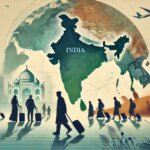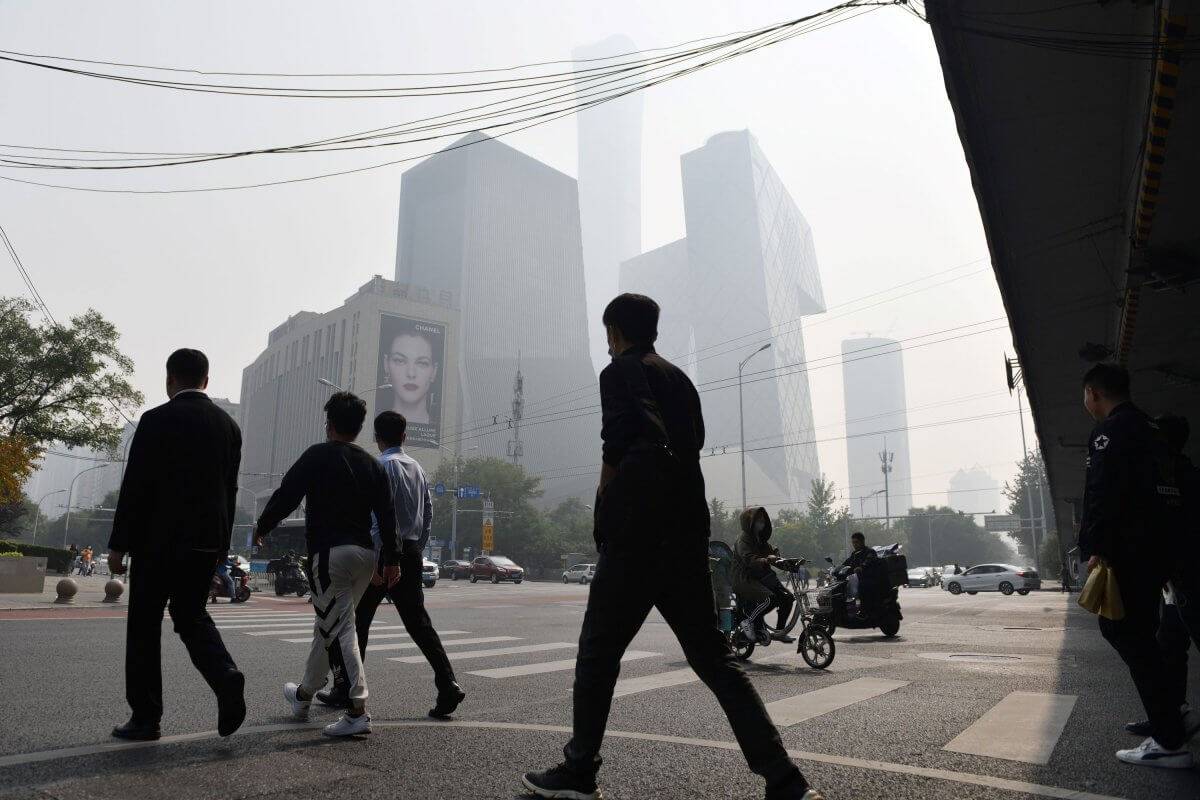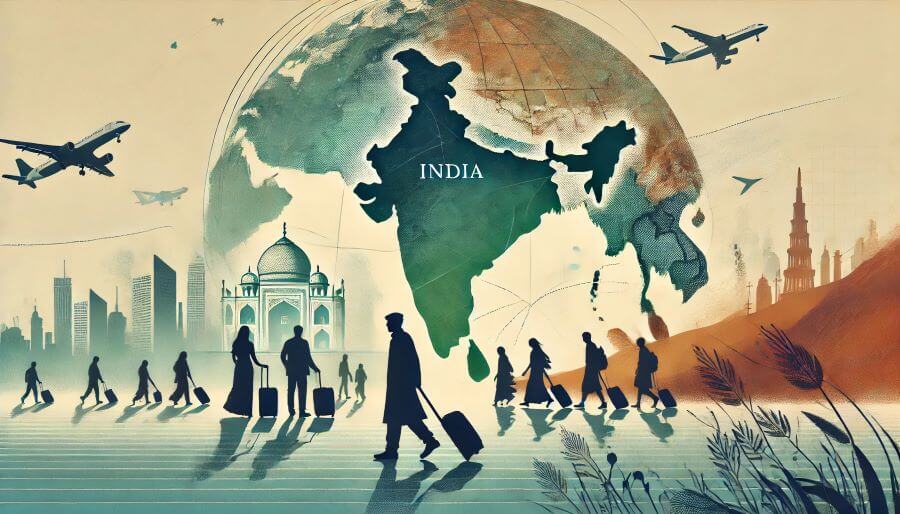In the landscape of global development, India stands out as a prominent player among developing countries. This analysis explores various facets of India’s development compared to other developing nations, examining economic growth, education, healthcare, infrastructure, and technological advancement.
Economic Growth
India’s economy is one of the fastest-growing in the world. With a GDP growth rate consistently above 6% in recent years, India has emerged as a significant economic power. In comparison, many developing countries in Africa and Latin America struggle with slower growth rates and economic instability. For instance, Nigeria and Brazil, two major economies in their respective continents, face challenges such as fluctuating oil prices and political unrest, hindering their economic progress.
Education
India has made substantial strides in improving access to education. The literacy rate in India has risen to approximately 77% as of 2021. However, there remains a significant urban-rural divide. In contrast, countries like Vietnam and Sri Lanka have achieved higher literacy rates, nearing 95%, with more uniform educational access across regions. This highlights the need for India to focus on bridging the gap between urban and rural education.
Healthcare
The healthcare sector in India has seen considerable improvements, yet it lags behind in terms of accessibility and quality when compared to some other developing countries. For example, Cuba boasts a world-renowned healthcare system with one of the highest doctor-to-patient ratios globally. Meanwhile, India faces challenges such as inadequate healthcare infrastructure and a shortage of medical professionals, especially in rural areas.
Infrastructure
India has invested heavily in infrastructure development, including the construction of highways, railways, and urban development projects. The country’s efforts in building a robust infrastructure network are comparable to those in China, albeit on a smaller scale. However, many African countries, like Ethiopia and Kenya, are rapidly improving their infrastructure with significant foreign investments, particularly from China. This competition highlights the dynamic nature of infrastructure development in the developing world.
Technological Advancement
India is a leader in the technology sector among developing countries. The nation’s IT industry, centered in cities like Bangalore and Hyderabad, has gained global recognition. Additionally, India’s digital economy is growing rapidly, with initiatives like Digital India aiming to enhance internet connectivity and digital literacy. In comparison, countries like Indonesia and the Philippines are also making strides in technology but are yet to reach the same level of global impact as India.
India’s development trajectory showcases a mix of remarkable achievements and ongoing challenges. While the country excels in economic growth and technological advancement, it still faces hurdles in healthcare and education. By learning from the successes and setbacks of other developing nations, India can continue to evolve and strengthen its position on the global stage.
Why India is Still Developing and the Pros and Cons for Indian People
India is often highlighted as a significant player among developing countries, but despite its advancements, it remains classified as a developing nation. This analysis delves into the reasons behind this classification and compares India’s progress with that of other developing countries. We will also explore the pros and cons for Indian people as part of this broader picture.
Why India is Still a Developing Country
- Economic Disparities: Despite impressive GDP growth, income inequality in India is stark. A substantial portion of the population lives below the poverty line, and wealth distribution is uneven. In comparison, countries like Brazil and South Africa also struggle with similar disparities, but they have implemented more robust social safety nets.
- Healthcare Challenges: India’s healthcare system faces significant hurdles, such as inadequate infrastructure and limited access in rural areas. Nations like Cuba and Thailand have more accessible and comprehensive healthcare systems, contributing to their higher Human Development Index (HDI) rankings.
- Educational Inequities: While India’s literacy rate has improved, there is still a considerable gap between urban and rural education. Countries like Vietnam have more uniform educational systems, leading to higher overall literacy rates and better educational outcomes.
- Infrastructure Development: India’s infrastructure, although rapidly developing, still lags in comparison to countries like China and Malaysia, which have more advanced transportation and urban development networks.
- Corruption and Bureaucracy: High levels of corruption and bureaucratic inefficiencies hinder economic growth and development in India. Other developing countries, such as Rwanda, have made significant strides in reducing corruption and streamlining administrative processes.
Pros for Indian People
- Economic Opportunities: India’s rapidly growing economy offers vast opportunities for entrepreneurship and employment, especially in sectors like IT, manufacturing, and services.
- Cultural Richness: India’s diverse cultural heritage provides a rich tapestry of traditions, festivals, and languages, contributing to a unique and vibrant society.
- Technological Advancements: The Indian tech industry is globally recognized, providing numerous job opportunities and fostering innovation and entrepreneurship.
- Demographic Dividend: With a large, youthful population, India has the potential to harness its demographic dividend for economic growth and development.
Cons for Indian People
- Poverty and Inequality: A significant portion of the population still lives in poverty, and the gap between the rich and the poor is widening, limiting access to resources and opportunities for many.
- Healthcare Access: Limited access to quality healthcare, particularly in rural areas, poses significant challenges, leading to poor health outcomes for many Indians.
- Educational Disparities: Unequal access to education, especially between urban and rural areas, hampers social mobility and economic opportunities for many.
- Environmental Issues: Rapid industrialization and urbanization have led to severe environmental degradation, including air and water pollution, which adversely affect public health and quality of life.
India’s classification as a developing country stems from its ongoing challenges, including economic disparities, healthcare inadequacies, educational inequities, and infrastructure development issues. However, the nation’s robust economic growth, technological advancements, and cultural richness offer significant advantages to its people. By addressing these challenges and learning from the successes of other developing nations, India can continue to advance and improve the quality of life for its citizens.
When Will India Be Considered a Developed Country?
India, one of the world’s fastest-growing economies, has made remarkable strides in various sectors. Yet, it still carries the tag of a “developing country.” This article explores the factors influencing India’s journey towards being classified as a developed nation and estimates when this milestone might be achieved.
Key Factors for Development
- Economic Growth and Stability India needs sustained and inclusive economic growth. While the country’s GDP growth rate has been impressive, achieving equitable wealth distribution remains a challenge. Reducing poverty and ensuring stable economic conditions are crucial steps toward development.
- Education and Skill Development High literacy rates and quality education are hallmarks of developed countries. India must focus on improving its education system, especially in rural areas, and invest in skill development to build a knowledgeable and capable workforce.
- Healthcare Infrastructure A robust healthcare system is essential for a developed country. India needs to enhance its healthcare infrastructure, making quality medical services accessible to all citizens, particularly in rural regions.
- Infrastructure Development Modern and efficient infrastructure, including transportation, utilities, and urban development, is vital for economic growth. India must continue investing in infrastructure projects to support its growing population and industries.
- Technological Innovation Technological advancement drives development. India is already a leader in the IT sector, but it must expand its technological innovation to other fields such as manufacturing, agriculture, and renewable energy.
- Good Governance and Reduced Corruption Effective governance and low corruption levels are characteristics of developed nations. India needs to improve its governance systems, ensure transparency, and reduce corruption to foster a conducive environment for development.
Prospects for India Becoming a Developed Country
Given the current trajectory, several optimistic estimates suggest that India could achieve developed country status by 2040-2050. However, this timeline depends on various factors, including:
- Consistent Policy Implementation: Ensuring that economic and social policies are effectively implemented and sustained over time.
- Global Economic Conditions: Navigating global economic fluctuations and leveraging international trade opportunities.
- Social Reforms: Addressing social issues such as gender inequality, caste discrimination, and social justice to create an inclusive society.
Challenges to Overcome
- Population Growth: India’s large and growing population can strain resources and infrastructure if not managed properly.
- Environmental Concerns: Pollution, deforestation, and climate change pose significant threats to sustainable development.
- Rural-Urban Divide: Bridging the gap between urban and rural areas in terms of development and access to resources is essential.
Conclusion
India’s journey to becoming a developed country is marked by significant achievements and formidable challenges. By focusing on economic stability, education, healthcare, infrastructure, technological innovation, and good governance, India can move closer to achieving developed nation status. While predicting the exact timeline is complex, consistent efforts and strategic planning could see India emerge as a developed country by the mid-21st century.
I am Komal Hatwaani, aims to provide readers with informative and engaging content that covers everything from technology and business to entertainment and lifestyle. This website dedicated to delivering high-quality content that informs, entertains, and inspires our readers.
Join us on our journey as we continue to explore the ever-evolving landscape of news and information, providing you with valuable insights and perspectives that enrich your digital experience.













